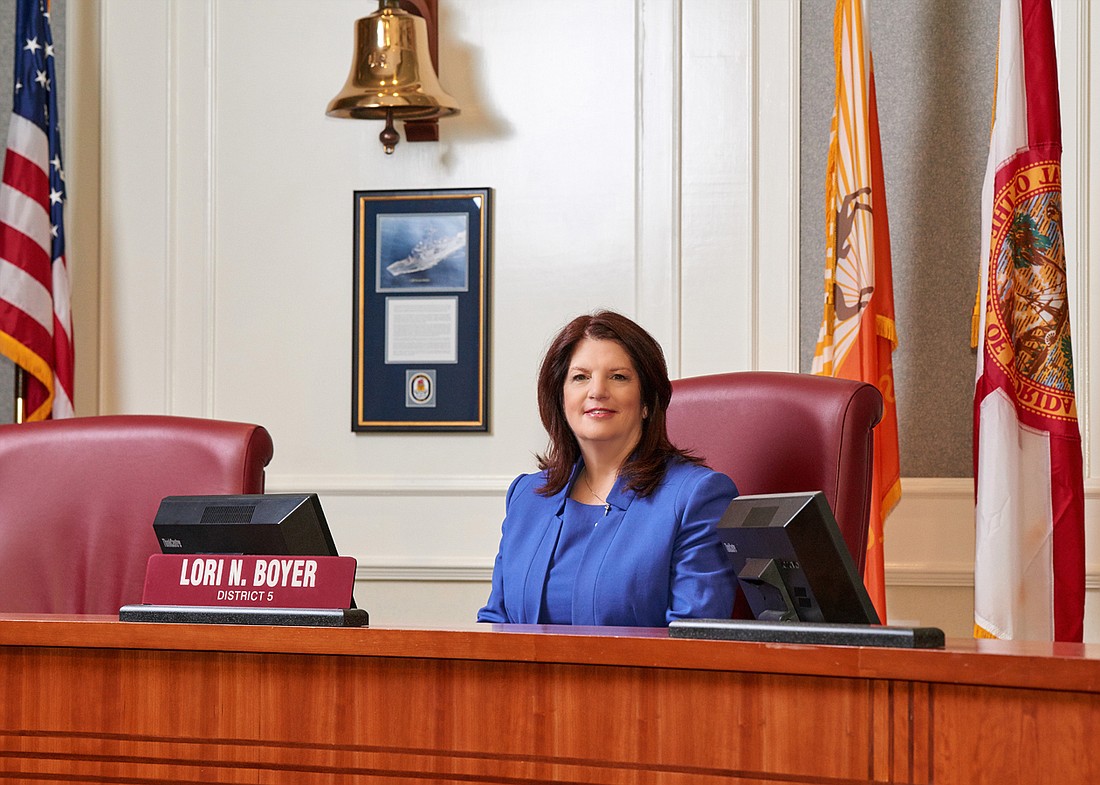
City Council member Lori Boyer is quietly working to streamline building design standards and redefine zoning in Downtown Jacksonville.
Boyer has been meeting regularly since May with a working group to reshape the standards that regulate development in the urban core.
“What we have now is outdated,” she said Tuesday. “It’s another one of these sections of the code that we haven’t touched in quite a while.”
Boyer is working on Chapter 656, specifically Subpart H of Jacksonville’s ordinance code — the section that defines the Downtown Zoning Overlay, building and design standards and authorizes the Downtown Investment Authority and Downtown Development Review Board to interpret and enforce those regulations when reviewing new development.
She said in some cases the existing guidelines discourage developers from investing Downtown.
Her proposal would likely rezone Downtown under the Central Business District category that allows for mixed-use development.
“It allows for most uses and gets rid of some of the red tape,” Boyer said.
Property records show a mix of zoning Downtown.
Another issue she’s addressing is the number of deviations development firms seek from the design standards when pushing a project through the DDRB’s approval process.
Most ask to reduce required parking or to exceed the maximum building height. Others ask for more specific deviations to landscaping or building transparency requirements.
“Deviations were intended to be used sparingly, but that’s not the case anymore,” she said. “That tells me the standards need attention.”
Boyer formed a working group comprising DDRB member Brenna Durden, DIA member Carol Worsham, architect Alan Wilson and Assistant General Counsel Susan Grandin to work on the project. DIA staff and other city employees also are contributing.
Through an evolving draft, they’ve removed or edited sections of the code to cut down on the need for deviations and to add clarity for the development community.
Boyer said that work includes defining acceptable types of development in the urban core, “and what do we want to prioritize.”
Certain types of construction either are heavily regulated or restricted.
“We don’t want to restrict something if the only reason to do so is because that’s how it’s always been done.”
Downtown Jacksonville is divided into districts, each with its own guidelines.
They include the Brooklyn and Riverside Avenue District, Cathedral District, Central Civic Core District, Church District, Institutional District, LaVilla District, River Park District, two Riverfront District areas, the Stadium District and the Southbank District.
The city uses these boundaries to restrict or allow development uses based on the area’s history and defining characteristics.
“We’re pretty much going to allow all uses everywhere except for a few, depending on the area,” she said. “We decided we needed to be thoughtful and intentional with what’s regulated and what’s not.”
Boyer said there will be “bonus uses” for some districts based on its unique characteristics.
For example, the code states that “the Cathedral District should encourage residential development with in-fill housing with limited neighborhood-serving commercial uses on Liberty Street and the east side of Ocean Street.”
“Education, civic and religious uses are the focal point” of the Church District where development “should support the local student population and religious uses.”
Boyer intends to redefine some of those areas.
“The districts that were created don’t really comport with what we’re doing today or what makes sense today,” Boyer said.
Her plan expands the Central Civic Core District and eliminates the Institutional District.
It creates a new Working Waterfront District to comprise the Talleyrand port area and replaces the Stadium, Riverfront and River Park districts with a new area called the Sports and Entertainment District. That includes most of the Downtown Northbank from Metropolitan Park to about Liberty Street.
Boyer said the exact boundaries aren’t yet defined.
The changes also address some building design standards like maximum height or how new developments interact and activate the street level.
“We’re mostly going to unlimited heights, with some exceptions,” Boyer said. “Another area is making sure developers are making the pedestrian realm inviting.”
Some districts, she said, will continue to prioritize or somewhat restrict building standards.
The latest draft of the guidelines limit construction in parts of Brooklyn and LaVilla to 75 feet and new buildings in the Cathedral District could be capped at 60 feet.
Those numbers are not finalized.
The group also has new standards for construction along the river that enforces staggered heights, with shorter buildings closest to the bulkheads. Similar restrictions already exist, but Boyer wants to better define it.
Boyer said they’re nearly ready to introduce a draft to the public in December.
“We’ll engage NAIOP and the development community, as well as the DIA and DDRB so they have a chance to give us their input,” she said.
The project is one of Boyer’s last as a council member. She’s represented the San Marco area in District 5 for nearly eight years and is term-limited.
She said she’s ready to cross it off her page-long list of things to complete before she leaves City Hall on July 1.
“Fingers crossed, we’ll introduce legislation in January,” Boyer said.